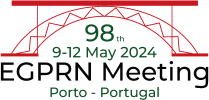Interprofessional collaboration in the home care setting: Perspectives of people receiving home care, relatives, nurses, general practitioners, and therapists. Results of a qualitative analysis
Uta Sekanina, Britta Tetzlaff, Ana Mazur, Tilmann Huckle, Anja Kühn, Richard Dano, Carolin Höcklmann, Katrin Balzer, Sascha Köpke, Martin Scherer, Eva Hummers, Christiane Müller
Keywords: interprofessional relations, home healthcare, family, health professions
Background:
About one million people are in need healthcare at home in Germany. This is a mostly complex endeavour because interprofessional collaboration is often challenging. This might have a negative impact on patient safety.
Research questions:
How do people receiving home care (PRHC), relatives, registered nurses from home care services, general practitioners (GP) and therapists (occupational-, physio-, speech therapists) perceive interprofessional collaboration in the home care setting?
Method:
Semi-structured interviews were conducted with 20 PRHC and 21 relatives. Additionally, we performed nine monoprofessional focus groups involving nurses of home care services (n=17), GP (n=14), and therapists (n=21). Data were analysed by qualitative content analysis.
Results:
Three main categories evolved: a) “perception of interprofessional collaboration”, b) “means of communication”, and c) “barriers and facilitators”. a) PRHC and relatives often perceive little to no interprofessional collaboration and take over a significant part of the organisational coordination and information exchange. Interprofessional collaboration in steady care situations does exist at times and mostly concerns coordination tasks. Contact and information exchange are rare. However, interprofessional personal encounters are sporadic. Fixed agreements and permanent contact persons are not standard but increase with the complexity of the healthcare situation. Joint collaborations are often perceived as highly beneficial. b) Means of communications such as telephone, fax, or E-mail are used differently and are often considered tedious and time-consuming. In general, no interprofessional formal written or electronic documentation system exists. c) Personal acquaintance and mutual trust are beneficial, while a lack of mutual availability, limited time, and inadequate compensation hinder interprofessional collaboration.
Conclusions:
Interprofessional collaboration in home care occurs irregularly, and coordination often remains with PRHC or relatives. While this individual care setup may work relatively straightforwardly in care situations of low complexity, it becomes vulnerable to disruptions with increasing complexity. Close interactions, joint collaboration, and fixed means of communication might improve healthcare at home.
Points for discussion:
How does interprofessional collaboration in the home care setting work in your country?
Which (digital) shared documentation system do you use in managing complex healthcare situations between professionals at home?
How do you involve persons receiving home care and relatives in the interprofessional home care process?
#35

